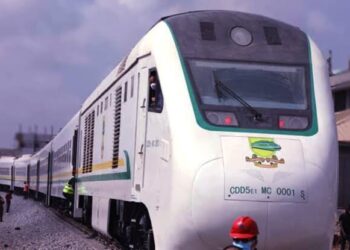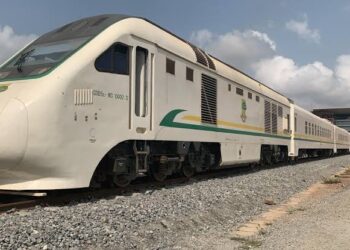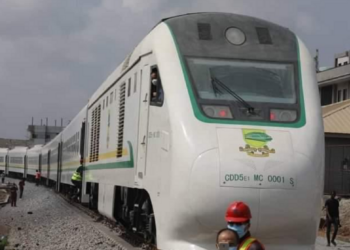A Kaduna-bound passenger train derailed on Tuesday morning at Asham, along the Abuja-Kaduna corridor, shortly after departing Abuja at 9:45 am.
The Nigerian Television Authority (NTA) announced the incident via its official X account, posting:
“Kaduna bound train derails at Asham along Abuja-Kaduna corridor. Train left Abuja at 9:45 am.”
NTA also shared a video clip showing several coaches off the track, with passengers including women, children and men crawling out of the train.
In the footage, the person behind the camera explained that she had been seated in the last coach and, upon exiting after the train came to a halt, discovered that other coaches had overturned with people gathered outside.
At the time of filing this report, the Nigerian Railway Corporation (NRC) had not issued an official statement, and NTA did not indicate whether there were casualties.
What you should know
Nigeria’s railway system has recorded multiple train accidents across various corridors in recent years, with derailments emerging as the most frequent.
The Abuja-Kaduna corridor, one of the country’s busiest passenger routes, has been particularly affected.
- Just days ago, the Nigerian Railway Corporation (NRC) confirmed that a Kaduna-bound train experienced a “hot axle” fault near Rigasa Station in Kaduna, which disrupted services for some business class passengers.
- Earlier in May 2024, another derailment was reported at Jeremy Station along the same corridor.
- Another major line, the Warri-Itakpe corridor, is also currently undergoing urgent and critical track repairs following a suspension of services. The NRC announced on August 22, 2025, that work on the affected sections has reached an advanced stage and that operations will soon resume, highlighting the broader safety and maintenance challenges confronting Nigeria’s rail infrastructure.
According to the National Bureau of Statistics (NBS) 2023 Social Statistics Report, derailments were the most common type of train accident in Nigeria between 2020 and 2022.
The report documented 183 derailment incidents during the three-year period, compared to 155 cases of loss of control and locomotive failure, 51 cases of detachment, 28 collisions, 9 washouts, and 41 accidents linked to miscellaneous causes.
Beyond accidents, vandalism has also posed a major challenge to the railway system. Incidents such as the removal of rail tracks, theft of signaling equipment, and sabotage of critical infrastructure have repeatedly disrupted operations and raised safety concerns across several routes.



















